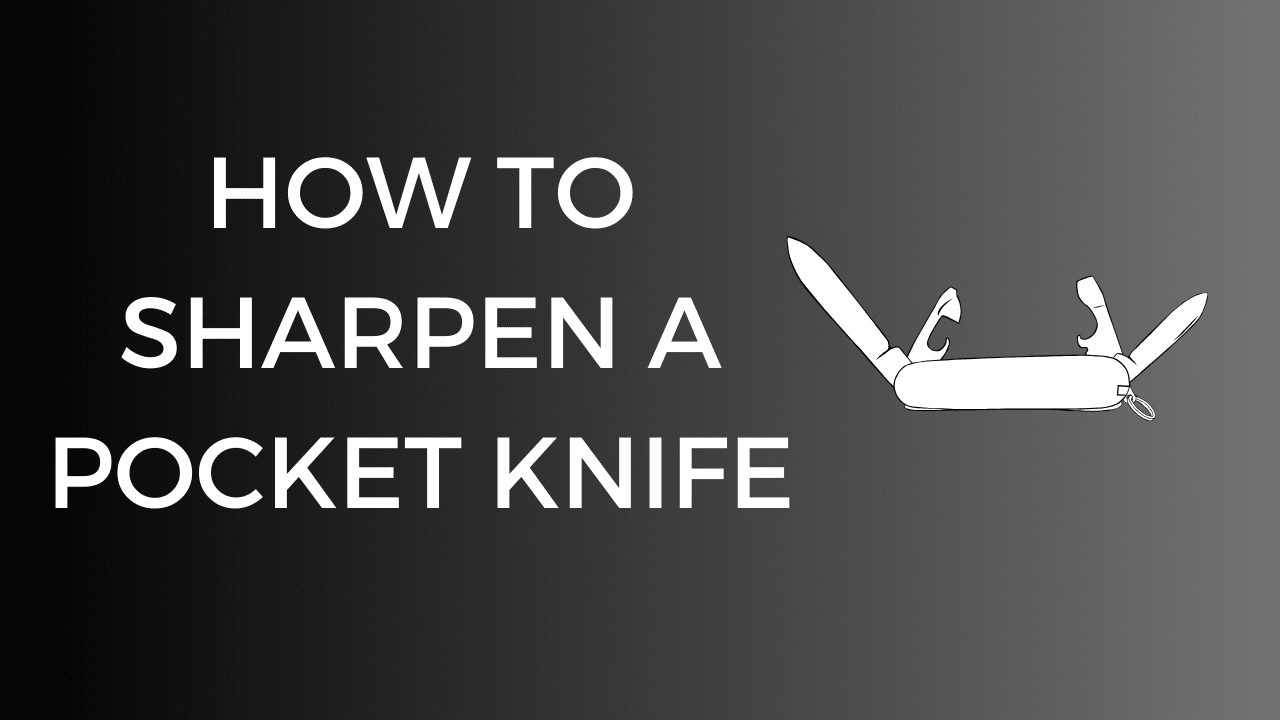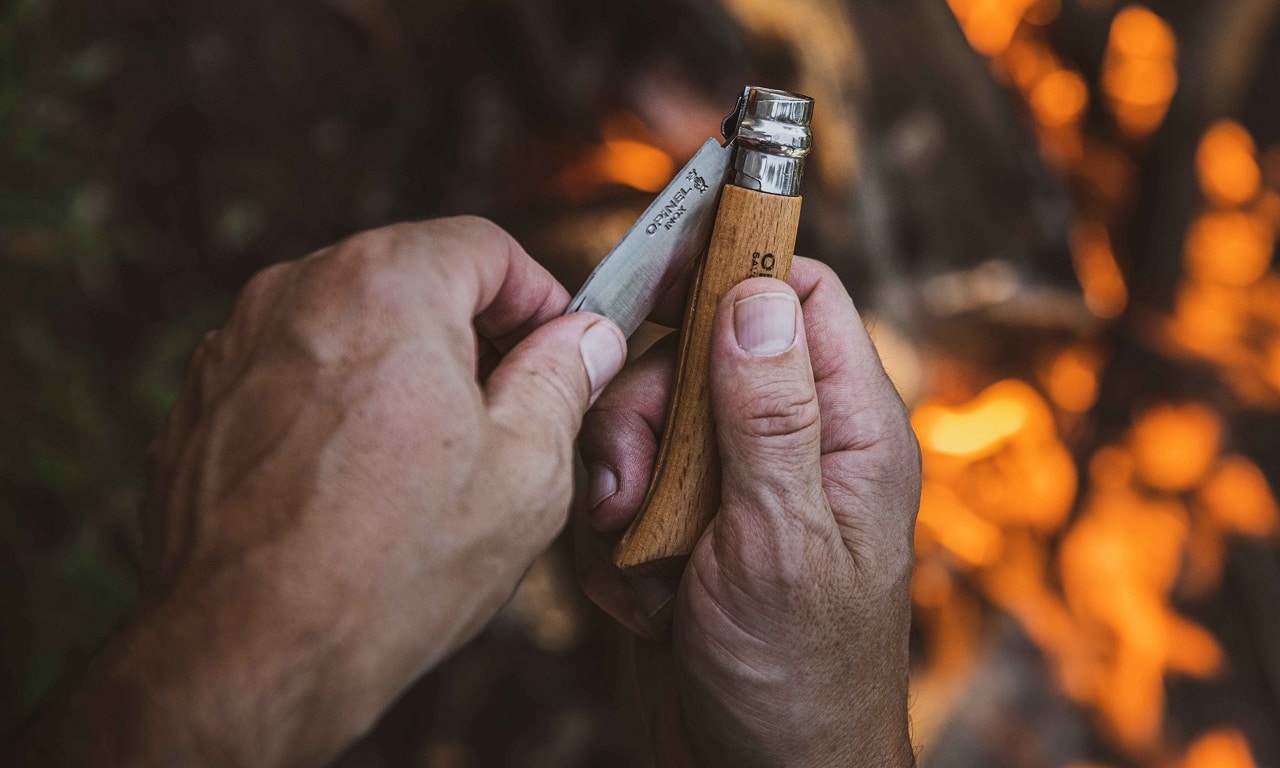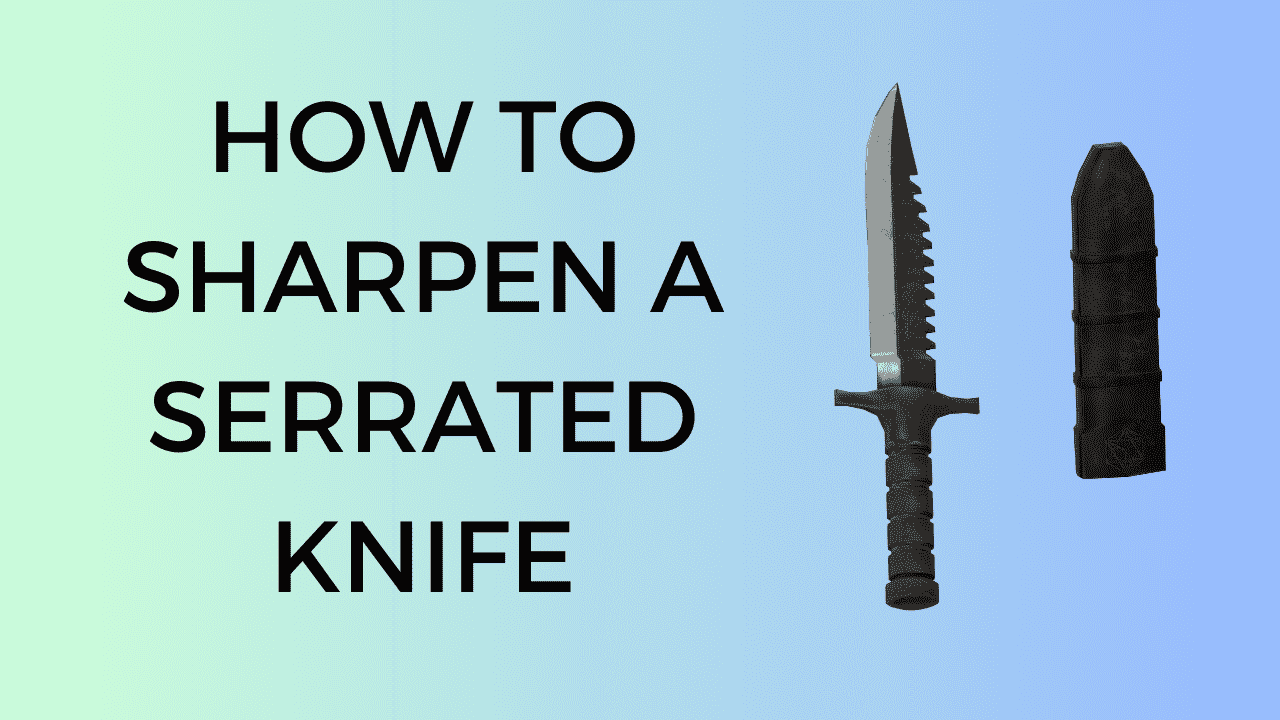How to sharpen a pocket knife ?
Step-by-Step Sharpening Process: Crafting the Perfect Edge
After gathering our sharpening implements and arming ourselves with protective gear, it’s time to go in and tackle the core of the issue.Sharpening a pocket knife requires patience, skill, and knowledge. Allow us to examine the process in detail.
A.Preparing the Workspace: Setting the Stage for Sharpness
- Clean the Knife: Before we embark on the sharpening journey, let’s give our pocket companion a little spa day. Remove any dirt, grime, or residue clinging to the blade. A clean slate ensures that your sharpening efforts are focused on revitalizing the edge rather than battling debris.
- Choose a Well-Lit and Stable Surface: Picture this as the grand stage for your sharpening performance. A well-lit and stable surface not only helps you see every nuance of the blade but also ensures safety. After all, a stable platform is your best ally when navigating the delicate dance of sharpening.
B.Choosing the Right Sharpening Tool: Decoding the Symphony of Grits
- Understanding Grit Levels: Grit is the language of sharpening. From coarse to fine, each grit level plays a role in sculpting the edge. We’ll unravel the mystery of grits, helping you understand when to start with a coarse grit and when to finesse with a finer one.
- Selecting the Appropriate Tool for Your Knife: Just as a painter chooses different brushes, selecting the right sharpening tool is an art. Whether it’s a whetstone or a sharpening rod, we’ll guide you through the selection process, ensuring your chosen tool aligns seamlessly with your blade’s needs.
C.Holding the Knife Correctly: The Dance of Safety and Precision
- Emphasize Safety and Proper Grip: Your grip is the conductor’s wand in this symphony. We’ll highlight the importance of a secure grip, ensuring that every move you make is not just effective but safe. Safety and precision dance hand in hand in the world of sharpening.
- Angle Considerations for Different Knives: Just as every dancer has a signature move, every knife has an ideal sharpening angle. We’ll demystify the angles, ensuring you dance in harmony with your blade, whether it’s a robust outdoor knife or a delicate everyday carry.
D.Sharpening Techniques: Bringing the Blade to Life
- Using the Whetstone: The whetstone is your maestro, and we’ll guide you through its utilization. From wetting the stone to executing the sharpening strokes, we’ll break down the process into simple, rhythmic movements.
a. Wetting the Stone: Imagine this as the prelude to the performance. We’ll explore why wetting the whetstone is essential and how it enhances the sharpening process. - b. Executing the Sharpening Strokes: With the stage set and the stone moist, it’s time for the main act. We’ll guide you through the strokes, ensuring that each movement contributes to the crescendo of sharpness.
- Sharpening Rod Methods: If the whetstone is the maestro, the sharpening rod is the virtuoso. We’ll delve into the proper technique, angles, and the secret sauce—honing oil
- a. Proper Technique and Angle: Just as a musician perfects their technique, we’ll help you master the art of using a sharpening rod. Precision is key, and we’ll guide you through every nuance.
b. How to Use Honing Oil: Honing oil is the unsung hero in the sharpening symphony. We’ll uncover its role, ensuring that your blade glides through the process smoothly and emerges with a lustrous, keen edge.
So, fellow blade enthusiasts, with our workspace prepared and tools in hand, we’re poised to embark on the sharpening odyssey. Each step in the process is a note in the melody of revitalizing your pocket companion. Join us as we dance through the techniques, refining your blade into a masterpiece of sharpness. Stay tuned for the next act in our sharpening saga!






Norma ISO 10816
Aparatos de calibracion: esencial para el funcionamiento uniforme y efectivo de las maquinas.
En el entorno de la tecnologia contemporanea, donde la rendimiento y la seguridad del dispositivo son de maxima significancia, los aparatos de calibracion tienen un tarea crucial. Estos dispositivos adaptados estan creados para calibrar y asegurar partes dinamicas, ya sea en herramientas manufacturera, automoviles de traslado o incluso en dispositivos de uso diario.
Para los tecnicos en reparacion de sistemas y los tecnicos, trabajar con equipos de calibracion es esencial para proteger el rendimiento fluido y estable de cualquier aparato movil. Gracias a estas herramientas modernas sofisticadas, es posible reducir sustancialmente las movimientos, el zumbido y la presion sobre los sujeciones, aumentando la longevidad de componentes caros.
Igualmente significativo es el papel que juegan los sistemas de equilibrado en la soporte al usuario. El apoyo experto y el reparacion constante empleando estos sistemas permiten brindar soluciones de alta calidad, mejorando la bienestar de los clientes.
Para los propietarios de proyectos, la aporte en sistemas de ajuste y medidores puede ser importante para optimizar la rendimiento y rendimiento de sus dispositivos. Esto es sobre todo significativo para los inversores que gestionan pequenas y modestas organizaciones, donde cada elemento es relevante.
Por otro lado, los equipos de balanceo tienen una extensa utilizacion en el area de la prevencion y el gestion de calidad. Facilitan detectar probables fallos, impidiendo reparaciones costosas y danos a los aparatos. Ademas, los resultados obtenidos de estos sistemas pueden emplearse para mejorar procedimientos y potenciar la visibilidad en buscadores de exploracion.
Las sectores de aplicacion de los dispositivos de ajuste comprenden numerosas ramas, desde la fabricacion de ciclos hasta el monitoreo ambiental. No importa si se considera de importantes manufacturas industriales o reducidos espacios caseros, los aparatos de ajuste son esenciales para garantizar un operacion productivo y libre de interrupciones.